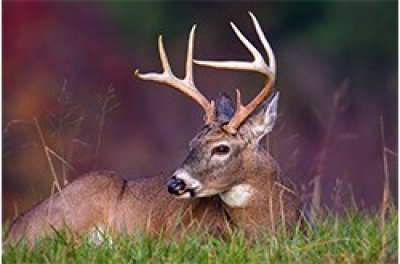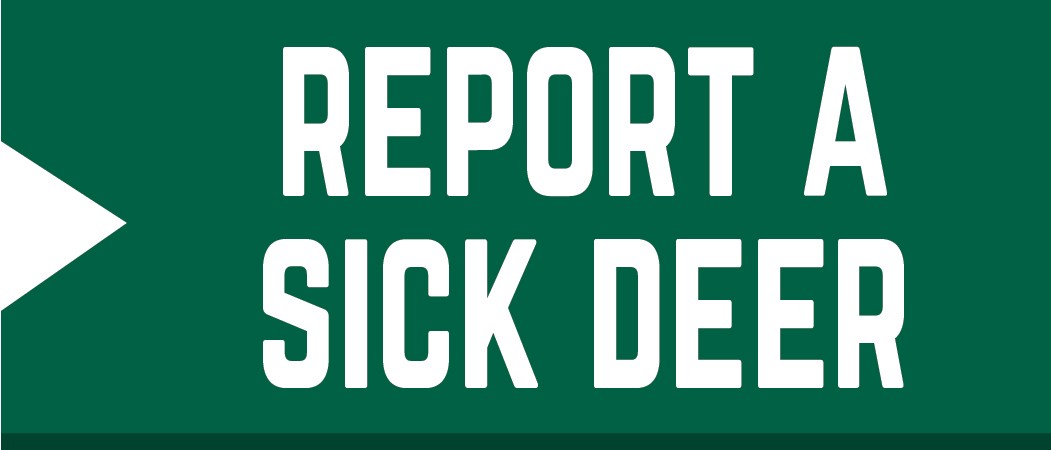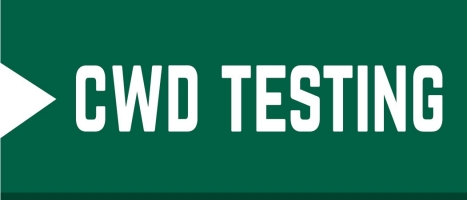Tennessee Deer Hunting
- Deer Hunting Units, Season Dates & Bag Limits
- Unit CWD - Earn-a-Buck and Replacement Buck Programs
- Chronic Wasting Disease (CWD) Regulations
- General Deer Hunting Regulations
- Big Game Mobile - Tag Before You Drag - Check-In Procedures
- TWRA Check-In Station Map
- Elk & Bear - Quota Hunt Information
- A Word About Tree Stand Safety
- Free Online Safety Course for Tree Stands
2024-2025 Deer Season Dates and Bag Limits
| SEASON TYPE |
SEASON DATES |
STATEWIDE ANTLERED BAG LIMIT |
UNITS 1, 2, & 3 ANTLERLESS BAG LIMITS |
UNITS 4, 5, & 6 ANTLERLESS BAG LIMITS |
|---|---|---|---|---|
August* |
Aug. 23 – Aug. 25, 2024 |
2 (1/day)**** |
Closed |
Closed |
Young Sportsman** (G/M/A) |
Oct. 26 – 27, 2024 Jan. 11 – 12, 2025 |
3/day |
2 |
|
Archery*** (A) |
Sept. 28 – Nov. 8, 2024 |
4 |
||
Muzzleloader/Archery (M/A) |
Nov. 9 – Nov. 22, 2024 |
2 |
||
Gun/Muzzleloader/Archery (G/M/A) |
Nov. 23, 2024 – Jan. 5, 2025 |
2 |
* Archery only. Private lands and select WMAs only. See individual WMA regulations. Due to the removal of Unit CWD, guns and muzzleloaders will no longer be allowed.
** Youths 6–16 years of age may participate. Participating youth can use gun, muzzleloader, and archery equipment (G/M/A). Young sportsmen must be accompanied by a non-hunting adult, 21 years of age or older, who must remain in a position to take immediate control of the hunting device and who must also comply with fluorescent orange regulations, as specified for legal hunters. Multiple youths may be accompanied by a single, qualifying adult. Antlerless bag limits for Units 4, 5, and 6 are not to exceed a total of 2 antlerless deer for the four days combined.
*** Closed during October Young Sportsman Hunt (Oct. 26–27, 2024).
**** Bag limit may be exceeded if taken as a bonus deer, under the Earn-A-Buck program in a CWD positive county or as a replacement buck.
Out-of-State Hunters - Be aware of carcass importation restrictions for deer, elk, moose and caribou. CWDinTennessee.com
Unit 1 includes Benton, Carroll, Chester, Crockett, Decatur, Dyer, Fayette, Gibson, Hardeman, Hardin, Haywood, Henderson, Henry, Lauderdale, Lake, Madison, McNairy, Obion, Shelby, Tipton, and-Weakley counties.
Unit 2 includes Cheatham, Davidson, Dickson, Giles, Hickman, Houston, Humphreys, Lawrence, Lincoln, Lewis, Marshall, Maury, Montgomery, Perry, Robertson, Stewart, Sumner, Wayne, and Williamson counties.
Unit 3 includes Bedford, Cannon, Clay, Coffee, DeKalb, Franklin, Jackson, Macon, Moore, Overton, Putnam, Rutherford, Smith, Trousdale, Van Buren, Warren, White, and Wilson counties.
Unit 4 includes Anderson, Bledsoe, Campbell, Claiborne, Cumberland, Fentress, Grainger, Grundy, Hancock, Morgan, Pickett, Scott, Sequatchie, and Union counties.
Unit 5 includes Bradley, Hamilton, Loudon, Knox, Marion, McMinn, Meigs, Rhea, and Roane counties.
Unit 6 includes Blount, Carter, Cocke, Greene, Hamblen, Hawkins, Jefferson, Johnson, Monroe, Polk, Sevier, Sullivan, Unicoi, and Washington counties.

General Deer Hunting Regulations
Carcass Transport into Tennessee:
Only approved parts (i.e., deboned meat, clean skulls, skull plates and teeth, antlers, finished taxidermy, hides, and tanned products) from deer, elk, moose, and caribou may be brought back into TN.
Carcass Transport concerning CWD Affected Counties
Approved parts (i. .e., deboned meat, clean skulls, skull plates and teeth, antlers, finished taxidermy, hides, and tanned products) may be moved freely within Tennessee.
There are restrictions on moving unapproved parts (i.e. whole or undressed carcasses) from county to county dependent on a county’s CWD status.
Visit CWD Affected Counties – Carcass Transportations Restrictions for more details.
Deer Harvest Check-In
All harvested deer must be checked in. Visit Big Game Check-In Procedures for details.
Antlered Deer
Male or female deer with at least one (1) antler that is a minimum of three (3) inches in length.
Units A, B, C, D, L - Two (2) antlered deer (one per day, not to exceed 2 for the season). The bag limit of two (2) antlered deer may be exceeded if taken as a bonus deer.
Unit CWD - Three (3) antlered deer (one per day, not to exceed 3 for the season). The bag limit of three (3) may be exceeded if taken under the Earn-A-Buck Program in Unit CWD, or if taken as a Replacement Buck.
Antlerless Deer
Male or female deer with no antlers or with antlers that are less than three (3) inches in length.
Antlerless deer hunters may harvest up to the unit antlerless bag limit in each unit. Moving to a different county within the same deer hunting unit does not increase the hunter’s bag limit.
Archery equipment is legal during muzzleloader and gun seasons, muzzleloading equipment is legal during gun season.
Albino Deer
Hunting, trapping, or possession of albino deer is prohibited as set forth in TCA 70-4-130. An albino deer is a deer with a lack, or significant deficiency, of pigment in the skin and hair, and has pink eyes.
A Word About Tree Stands
The TWRA urges all deer hunters hunting from tree stands to use a fall restraint system. Most deer hunting accidents involve hunters falling from a tree stand. Proper use of a fall restraint system could prevent or lessen the severity of these accidents.
Related Deer Hunting Links
Summer feeding of deer could be hurting turkeys.
Consider abstaining from summer wildlife feeding. We all are aware that wild turkey numbers have been in decline across the Southeast US. Research has confirmed that declining populations are primarily due to poor reproduction and recruitment, not over-harvest. Supplemental feeding of wildlife, which has grown as a common practice in Tennessee and elsewhere, may be contributing to these declines.
Wildlife managers are concerned that corn put out for deer, especially during the summer, is hurting turkey numbers. A fungus called Aspergillus flavus grows in feed exposed to hot, humid conditions. This fungus produces toxins, known as aflatoxins, that are highly toxic to game birds, especially turkey poults and quail. New research has shown that in the summer, aflatoxin levels in feed can reach deadly levels to wild turkeys after only a few days (read the full report at: https://doi.org/10.7589/JWD-D-21-00052.)
Besides the risk of aflatoxin poisoning, other consequences to wild turkeys from feeding wildlife may include:
• Boosting population numbers of small mammal nest predators;
• Concentrating nest predators near nesting sites and brooding cover which may lead to higher predation rates;
• Unnaturally concentrating game animals (e.g., deer and turkeys) which increases the chances of disease outbreaks and spread.
Please consider these potential unintended consequences as you make decisions about wildlife feeding, especially during the hot, humid summer months. Contact Regional offices with questions.


